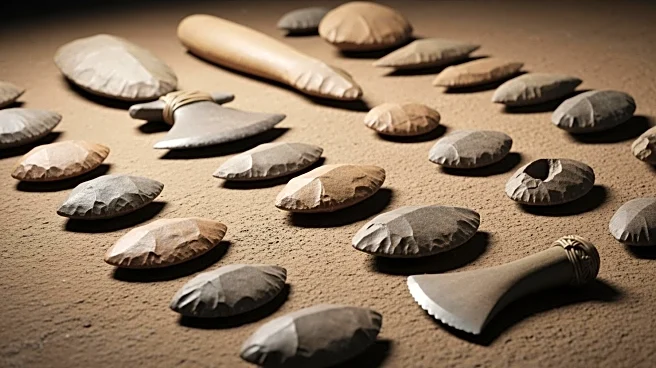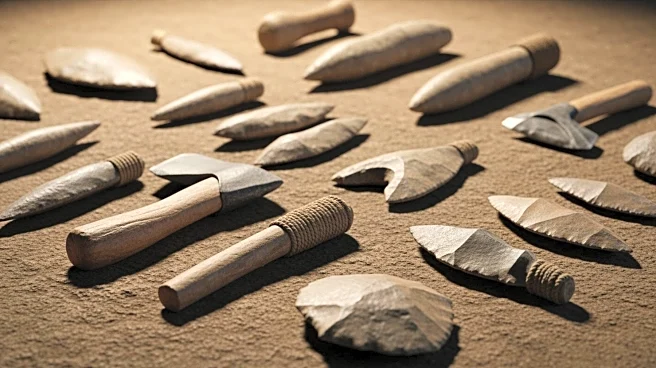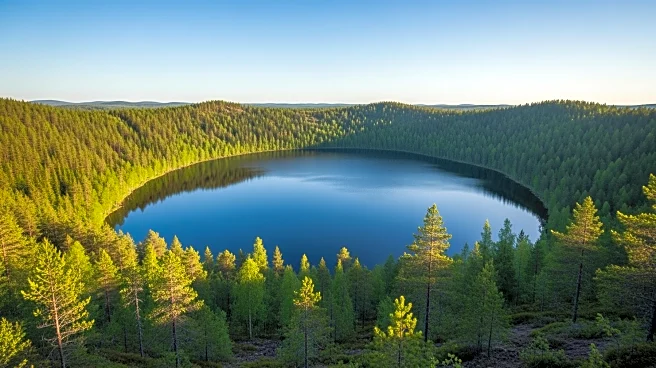What's Happening?
A recent study published in Nature Communications has revealed the discovery of ancient stone tools in Kenya's Turkana Basin, dating back between 2.75 and 2.44 million years. These tools, crafted by early
hominins, represent one of the earliest records of Oldowan stone toolmaking. The research, led by an international team, highlights the technological continuity and adaptability of early humans in response to environmental changes. The tools, described as the first multi-purpose 'Swiss Army knives,' demonstrate the ability of early humans to thrive amidst severe droughts, wildfires, and shifting landscapes. The study was conducted by researchers from various global institutions, with fieldwork supported by the National Museums of Kenya.
Why It's Important?
The discovery of these ancient tools provides significant insights into the technological capabilities and adaptability of early humans. It underscores the role of toolmaking in human evolution, particularly in how early hominins used technology to adapt to environmental challenges. This research not only enhances our understanding of human history but also highlights the resilience and innovation of our ancestors. The findings could influence current perspectives on human evolution and the development of technology as a means of survival and adaptation.
What's Next?
Further research is likely to focus on exploring other archaeological sites to uncover more about early human life and technological development. The study may prompt additional investigations into the environmental conditions of the Pliocene era and how they influenced human evolution. Researchers may also look into the cultural and social aspects of early human communities, as suggested by the continuity of toolmaking traditions.
Beyond the Headlines
The study raises questions about the cultural and social dynamics of early human societies, particularly how knowledge and skills were transmitted across generations. It also highlights the potential for interdisciplinary research, combining archaeology, geology, and anthropology, to provide a comprehensive understanding of human history.












